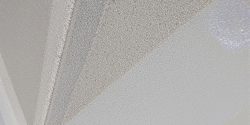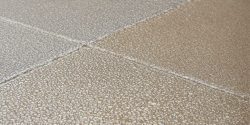Common Summer Roofing Issues in Florida
We know how tough summer can be on roofs here in Florida. Blistering sun, gusty storms, and downpours all take their toll. That’s why we turn to florida roofing services to help us spot granule loss, add reflective coatings, tighten loose shingles, and guard against leaks. Let’s walk through the basics so your roof lasts through the season.
Key Takeaways
- Watch for missing shingle granules and use reflective coatings to keep your roof cooler.
- Secure loose shingles and switch to stronger underlayment and fasteners to stand up to summer winds.
- Inspect flashing and seals often, and have an emergency repair plan ready for heavy rainstorms.
Mitigating Heat-Related Roof Deterioration With Florida Roofing Services

Florida summers are brutal, and your roof takes the brunt of it. The intense sun and high temperatures can really accelerate the aging process of roofing materials. We’ve seen firsthand how quickly shingles can degrade and protective coatings can fail under these conditions. It’s not just about aesthetics; it’s about protecting your home from water damage and maintaining energy efficiency. Let’s look at some key areas we focus on when helping homeowners combat heat-related roof issues.
Assessing Shingle Granule Loss
One of the first things we check for is shingle granule loss. Those little granules are super important because they protect the asphalt layer from direct sunlight. When they start to disappear, the shingles become more vulnerable to UV damage, which leads to cracking and brittleness. We look for telltale signs like dark patches on the shingles or an excessive amount of granules in your gutters.
Here’s a quick rundown of what we consider when assessing granule loss:
- Extent of granule loss across the roof surface
- Age of the shingles
- Type of shingle material
- Overall condition of the roof
If we find significant granule loss, it’s a sign that the shingles are nearing the end of their lifespan. We’ll then discuss options for repair or replacement, depending on the severity of the damage.
Applying Reflective Coatings
Reflective roof coatings are a game-changer in Florida. These coatings are designed to bounce sunlight away from your roof, reducing the amount of heat absorbed. This can significantly lower your energy bills and extend the life of your roofing materials. We typically recommend these coatings for flat or low-sloped roofs, but they can also be effective on shingle roofs in some cases.
Applying a reflective coating is not a one-size-fits-all solution. We carefully evaluate your roof’s condition, slope, and material to determine the best type of coating for your specific needs. We also consider factors like cost, durability, and environmental impact.
Here’s a simple comparison of different reflective coatings:
| Coating Type | Reflectivity | Durability | Cost |
|---|---|---|---|
| Acrylic | Medium | Medium | Moderate |
| Silicone | High | High | Higher |
| Polyurethane | High | High | Very High |
We’ll walk you through the pros and cons of each option so you can make an informed decision.
Reinforcing Roofs Against Summer Storm Winds
Summer in Florida isn’t just about the heat; it’s also the season for some serious storms. High winds can wreak havoc on roofs, so it’s important to take steps to reinforce them. We’ve seen firsthand how a little preparation can save a lot of trouble (and money) down the road. Let’s look at some key areas to focus on.
Securing Loose Shingles
One of the first things we do when prepping a roof for storm season is check for loose shingles. It’s pretty common to find some that have come unsealed, especially after a hot summer. Loose shingles are basically invitations for wind to get under them and rip them off.
Here’s a quick rundown of how we usually handle it:
- Inspect the entire roof for any shingles that are lifted, cracked, or missing granules.
- Apply roofing cement under the loose edges of the shingle.
- Press the shingle firmly back into place to create a good seal.
- For severely damaged shingles, replacement is often the best option.
Upgrading Underlayment And Fasteners
Sometimes, the problem isn’t just the shingles themselves, but what’s underneath. The underlayment is a critical layer of protection, and if it’s old or damaged, it won’t do its job. Similarly, the type of fasteners used to secure the shingles matters a lot.
We often recommend upgrading to a synthetic underlayment, which is much more durable and water-resistant than traditional felt paper. Also, using ring-shank nails can significantly improve the grip and prevent shingles from being pulled off in high winds.
Here’s a comparison of common fastener types:
| Fastener Type | Wind Resistance | Cost |
|---|---|---|
| Standard Nails | Low | Low |
| Ring-Shank Nails | Medium | Medium |
| Screw Fasteners | High | High |
Preventing Leak Damage In Heavy Rainfall
Florida summers mean rain. Lots of it. And all that water can find its way into your home if your roof isn’t ready. We need to be proactive to keep those leaks at bay. It’s not just about the immediate discomfort of a dripping ceiling; it’s about preventing long-term damage like mold growth and structural issues. Let’s look at how we can keep the water where it belongs – outside.
Inspecting Flashing And Seals
Flashing is the metal that goes around things like chimneys, vents, and skylights. Seals are the caulk or other material used to close gaps. These are prime spots for leaks. We need to check these areas carefully. Look for cracks, gaps, or rust. If you see anything, it’s time to take action.
- Check around every penetration in your roof.
- Pay special attention to areas where different roof sections meet.
- Use a ladder safely and have someone spot you.
Ignoring small issues with flashing and seals can lead to big problems later. A little bit of preventative maintenance can save a lot of money and stress.
Emergency Repair Protocols
Sometimes, despite our best efforts, a leak happens. What do we do then? First, contain the water. Use buckets or tarps to protect your belongings. Then, call a professional roofer. Quick action is key to minimizing damage. While you wait for the pros, you can try a temporary fix, like covering the leak with a tarp. But remember, this is just a temporary solution.
Here’s a simple table to help you prioritize:
| Urgency | Issue | Action |
|---|---|---|
| High | Active Leak | Contain water, call a roofer |
| Medium | Suspected Leak | Inspect area, check for damage |
| Low | Routine Maintenance | Check flashing and seals regularly |
Don’t delay in getting professional help. A small leak can quickly turn into a major headache, so it’s best to get it fixed right away.
## Conclusion
We’ve walked through the most common roofing headaches Florida summers throw at us. From sun-baked shingles that crack to sudden storms that rip off tiles, it pays to keep an eye on our roofs. A quick look after a heavy downpour or some loose nails spotted before the next heat wave can save a small fortune down the road. If we see anything odd, we should reach out to a trusted pro instead of hoping it’ll fix itself. That way, we’ll enjoy dry homes and fewer surprises when the next summer blast rolls in.
Frequently Asked Questions
How can we protect our roof from Florida’s scorching sun?
We check for missing granules on the shingles and then add a shiny coating. This coating reflects sunlight and keeps the roof cooler, helping it last longer.
What steps do we take to stop shingles from blowing away in storms?
We first look for any loose shingles and nail them down tight. Then we might add a strong underlayer beneath the shingles and use better nails to hold everything in place.
What should we do if water starts leaking during heavy rain?
We inspect the metal strips around chimneys and vents for cracks or gaps. After that, we follow our emergency repair plan to patch the leak until we can do a full repair.




